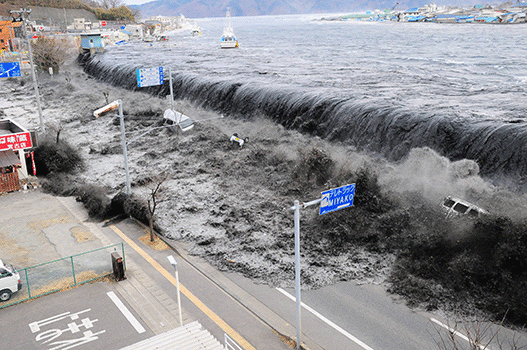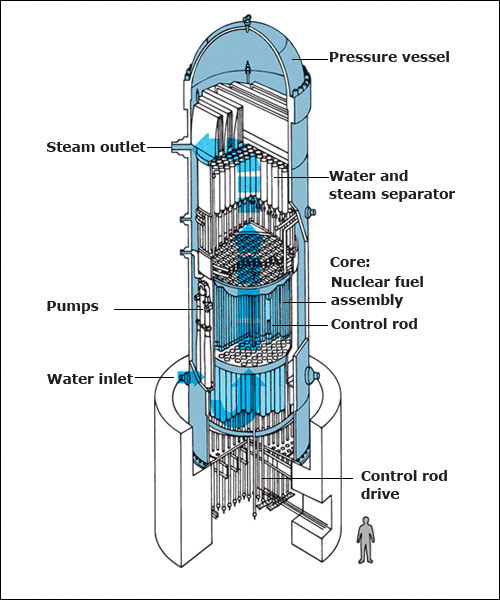New Leak of Radioactive Water from Damaged Fukushima Plant
Friday, August 23rd, 2013August 23, 2013
The discovery that highly radioactive water is leaking from a storage tank at Japan’s crippled Fukushima Daiichi Nuclear Power Station has further alarmed scientists already gravely concerned about conditions at the site. The tank is 1 of 1,000 built to store the massive amounts of water being used to cool the fuel rods from nuclear reactors damaged by a magnitude-9 earthquake and subsequent tsunami that hit Japan’s main island, Honshu, on March 11, 2011. Three of the six reactors at Fukushima went into full meltdown after the plant’s cooling system was knocked out.
The storage tanks at Fukushima, which are about 85 percent filled, currently hold a total of about 80 million gallons (300 million liters) of contaminated water. The leaking tank has released about 80,000 gallons (300,000 liters), most of which has seeped into the ground. Inspectors said the leak resulted from deteriorating plastic seams on the tanks. The leaking tank is one of 350 temporary steel-plated vessels constructed to expand the storage capacity for contaminated water. The other tanks are welded steel vessels. The problem with the storage tank led Japan’s nuclear energy watchdog agency to raise the threat level at the plant from one to three on the International Nuclear and Radiological Event Scale. Conditions at the plant were rated seven–the highest rating–after the tsunami.

A huge wave strikes Japan's coast on March 11, 2011. An earthquake that day caused a tsunami (series of powerful ocean waves) that crippled the Fukushima Daiichi nuclear plant. (© Mainichi Shimbun, Reuters)
News of the leak has strengthened the belief of many scientists that conditions at the plant are much worse than the Japanese government and and Tokyo Electric Power Company (TEPCO), the plant’s operator, are admitting. The leak has also intensified criticism of TEPCO for failing to contain leaks from the plant.
The tanks are only one focus of concern. One nuclear safety expert was quoted by the BBC as saying that contaminated water was leaking everywhere at the site, “not just from the tanks. It is leaking out from the basements, it is leaking out from the cracks all over the place.” According to a Japanese government official, as much as 75,000 gallons (284,000 liters) of groundwater is believed to be flowing daily downhill through the ruined plant and into a containment pond. Despite efforts to hold the contaminated water in the pond, some appears to be flowing into the Pacific Ocean. At a recent news conference, the head of Japan’s nuclear regulation agency expressed concerns about future leaks. Shunichi Tanaka told reporters, “We should assume that what has happened once could happen again, and prepare for more.”
Additional World Book articles:
- Japan 2011 (a Back in Time article)
- Reconsidering Nuclear Power (a special report)



